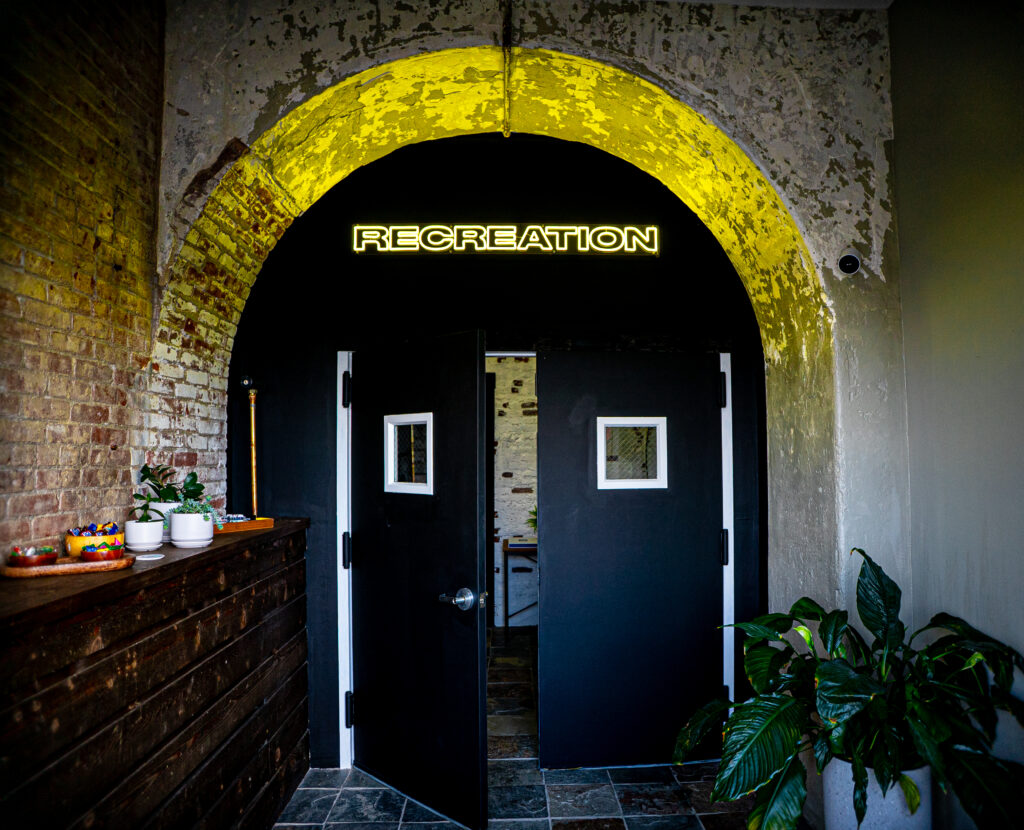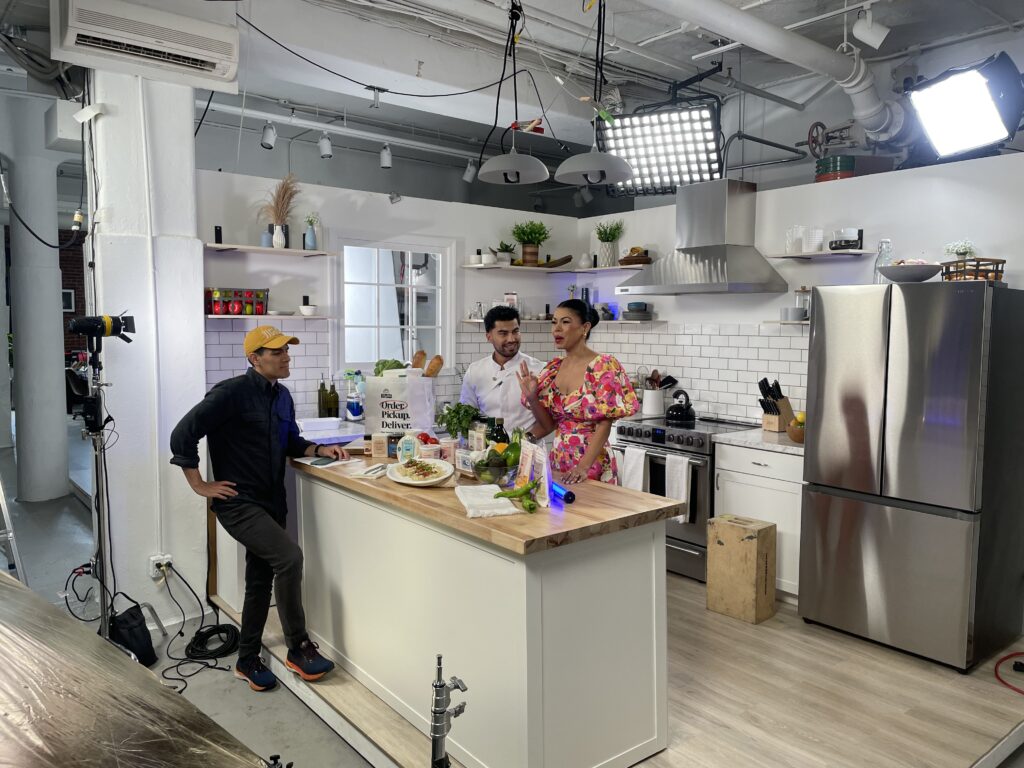So You Need to Rent a Photo/Video Studio? Here’s What You Need To Know!
Welcome! If it’s your first or 10th time looking to rent a studio, you’re in good hands. We’ve worked on & hosted all kinds of shoots, and we’ve picked up a thing or two along the way. So here’s a guide from us to you: this is everything you should think about before, during, and after booking a studio space.
By the end of this, you’ll know exactly what you need to do next… and hopefully it’s reaching out to us for a booking! But no hard feelings if not, we just want to help– however we can. 😉

Step 1: Think Through Your Needs (and Budget)
First up, let’s get specific. Take a second to think about what you’re actually doing in this space. Photo shoots? Video interviews? Full-scale film production? What kind of scenes are you shooting? The goal is to know exactly what you need before getting hamstrung by a studio that’s too small for your project, or dazzled by a studio that’s way beyond your scope..
- Size and layout: Consider if you need an open floor plan, multiple backdrop options, or specific dimensions for anything.
- Lighting needs: Some shoots need heavy-duty artificial lighting, while others just need big windows and a lot of natural light. Where do you fall on the spectrum?
- Special equipment: If you need soundproofing, high ceilings, a green screen, or something else– make sure you have that all on your checklist.
- Extras: Amenities like kitchen access for food styling, parking, or even a couch for the talent to relax on between takes can make or break a shoot day.
And, of course, have a budget in mind! There are clear upfront costs like deposits, but keep an eye out for extra fees on things like utilities, additional hours (OT), cleaning fees, or equipment rentals.
Step 2: Location, Location, Location
You’ll want a studio that’s easy to get to, both for you and any clients, models, or talent you’re working with on the project. Some location tips:
- Parking and public transport: Make sure the studio has enough parking (or public transit nearby) so everyone can get there stress-free.
- Accessibility for clients and models: The easier the spot is to find, the less you’ll get those “Where’s the entrance?” texts, and the less time you lose on your shoot day. When you’re packing a lot into a production day, every minute counts!
Local amenities: It’s always a good idea to check out nearby spots for coffee, food, or last-minute supply runs. Nothing worse than needing a few extra AA batteries and realizing the nearest store is 20 minutes away.
Step 3: Know the Types of Studios
Because our space is so versatile, we’re able to host everything from casual photoshoots to full-blown films. But knowing what kind of space suits your project will help you find a studio that has what you need.
- Photography Studios: Best for photoshoots, with basics like seamless paper and lighting.
- Content Studios: Flexible, usually geared for social media content creators, with backdrops, props, and more.
- Film Studios: Equipped for full-scale productions, and typically complete with soundproofing, props, and sometimes even built-in sets.
Event Spaces: Spacious setups, ideal for when you’re expecting a crowd & want to do things like serve drinks, play loud music, et cetera.
Step 4: Start Searching
Time to find the perfect spot! Here’s where most people start:
- Online platforms: Peerspace, Splacer, Giggster and SetScouter have lots of options.
- Community boards: Facebook and Instagram pages for local creatives often post great studio rentals.
- Studio websites and social media: Many studios manage their own sites and pages, so you can get an up-to-date view of what’s available. Try Googling photo/video studios in the area you’re looking to shoot in!
When you reach out, don’t be afraid to ask for availability, details on equipment, or any questions you have about the space. If you’re not getting clear answers, that’s typically not a great sign.
Step 5: Take a Tour (and Ask All the Questions)
Trust us on this one—always tour the studio before booking. Here’s what to check:
- Look & Lighting: make sure the look of space will work for your project stylistically, lighting-wise, et cetera.
- Power: Make sure outlets are accessible, and that you can route everything you need– nothing worse than repeated delays because the circuit breaker keeps getting tripped.
- Temperature and comfort: Is it climate-controlled? Good ventilation? You’ll thank yourself later.
- Safety: are there accessible exits in case of emergency?
- Acoustics: If you need clean audio, check for soundproofing.
- Space layout: See if there’s enough room for everyone and everything.
Bring a checklist and don’t be shy! The studio should be there to make sure you’re comfortable, and the more you know ahead of time, the smoother your shoot will go.

Step 6: Check the Lease Terms
You’ll want to be clear on these details before signing, so here’s what we always go over with our clients:
- Rental Rate and Extra Costs: Know what the base rate includes and what counts as an “extra”— cleaning fees, overtime, gear, et cetera.
- Length of the Lease: Whether you’re booking hourly, daily, or monthly, make sure it lines up with your schedule.
- Deposits and cancellation policies: Does the studio ask for a deposit? If so, ensure you know the terms for getting it back.
Again, the booking process should be easy and transparent, so you should always ask to clarify anything confusing before you sign papers.
Step 7: Get Your Logistics in Order
When the studio’s booked, you’ll need to plan your setup. The most seamless shoots work because there’s a game plan in advance for things like:
- Transport and load-in: Make sure you have a plan for getting equipment into the studio, especially if you’re bringing big items. Nobody loves the “Sorry, we thought it would fit through the door” situation.
- Equipment storage: If you’re renting multiple days or leaving things overnight, check with the studio on storage options.
Outlets and cables: Ask if you need to bring extra power strips or extension cords (aka stingers– there’s some film lingo for you). Nothing halts a shoot faster than realizing all the outlets are on the other side of the room.
Step 8: Confirm the Booking Details
When the big day’s coming up, make sure you’re in sync with your team and any vendors or clients joining you. Confirm your time slot, ask about early access if you need a little buffer for setup, and keep everyone in the loop.
Step 9: Keep it Tidy
Take it from us– studios really appreciate renters that leave the space neat & clean. So when the shoot wraps, do a quick check to make sure the space is as neat as you found it (or put yourself at risk of a good old “mystery cleaning fee”—just kidding… not really). Put back any rented items, and if you’re not sure, ask where things go. If you want to be sure everything’s right, take a picture of the studio before your team starts moving things around.
Step 10: Send Photos
This one is selfish– we love seeing all the different ways that our clients transform the space. And the same is true for most studio owners! So whenever you can, just send a few photos over. 🙂

And that’s it! Renting a studio is a lot easier when you know what to look for. By following these tips, you’re not just booking a studio—you’re setting yourself up for a successful shoot day. And let us know if we can help make it happen!